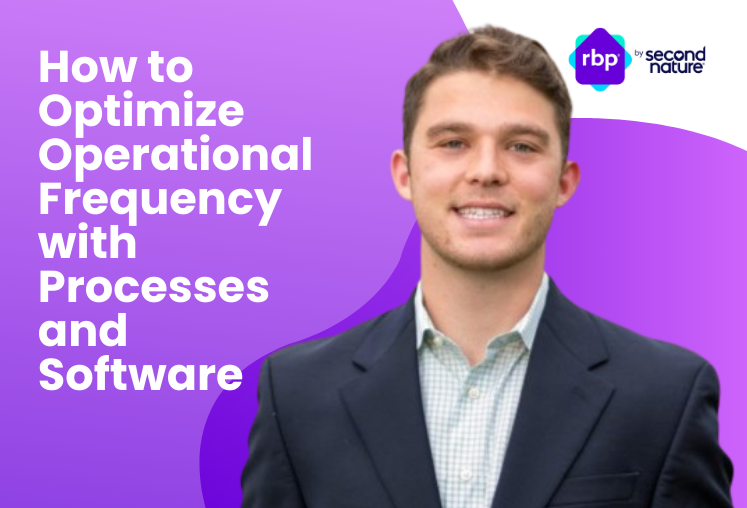Property management automation refers to using technology and software to automate various tasks and optimize processes related to managing properties. It can involve using property management software to streamline tasks such as rent collection, applicant screening, property maintenance requests, and accounting, among others.
If it sounds great, you’re right! The point is to reduce the amount of time and effort property managers need to spend on manual tasks, allowing them to focus on more strategic tasks that add value to their business. According to Pete Neubig, Co-Founder and CEO of VPM Solutions: “You have better communication, and things are getting done more efficiently for your residents, so they're happier. If the resident is happy, they will most likely re-sign the lease, which obviously is a win for the owner. And [it’s a win] for the property management company because now we're making more money because we're…reducing churn and capturing some opportunities to make more revenue.”
At Second Nature, we think of automation and outsourcing as two sides of the same coin. Either way, you're getting your time back. That's why our focus is making life better for residents and easier for property managers. Our suite of resident services helps support a better resident experience, driving up retention and making investors happier, too. And, since we fully manage every part of it, we also make life easier for you, the property manager. That's a "triple win."
With that said, let's dive into the nitty-gritty of property management automation: the seven tasks you can most easily automate and the seven tools to help you get there.

Which property management tasks should you automate?
Automation might make us think of manufacturing lines or robots, but in the modern workplace, automation is simply a catch-all term for tech tools that can instantly streamline your work process. Automation tools handle time-consuming, repetitive tasks, speeding up the workflow process, creating fewer mistakes, and freeing us up to do more valuable work.
Without automation, we find ourselves losing time with busy work like:
- Manually entering data
- Writing and sending emails
- Phone calls and followup
- Keeping track of to-do lists
- Fixing mistakes in spreadsheets or other work
- Reminding team members how to do day-to-day tasks
Think about the last month when you took the same action repeatedly – or saw the same situation and made the same decision – or got the same question and shared the same information.
If a task is easily duplicated and policy/rule-based, automation is coming for it. Here are a few of the most common areas where PMs are standardizing and applying automation tools.
1. Rent collection
Online rent payments can automate reminders to tenants, reduce errors, and increase on-time payments to collect rent without creating any additional work for the PM. Tools like Colleen.ai and EliseAI are innovating this space. Both are chatbot-type tools that help automate things like rent collection by automating communication about delinquency and the followup process. The tools communicate directly with your residents for you with rent payment reminders, support, and more.
2. Property inspections
Using an automated checklist on a handheld device can help you stay mobile and get inspections done in less time. Automation can instantly generate reports, so you don’t have to worry about returning to the office and entering all that data. Tools like RentCheck and OnSight Pros can either automate or outsource this work for you as a property manager. RentCheck is a software tool that you and your staff can use for photos, checklists, workflows, and more. There's also a native app that residents can use to do inspections themselves. Then, it will compile a clean, easy report that you can sent to your investors.
OnSight Pros isn't exactly an automation, but it has the same impact on your workflow. They have a network of professionals who do property reviews in person for you. They're not available in every market, but you can check their website for available service areas.
3. Maintenance requests
A 24/7 maintenance portal means you don’t have to take calls every time they come in, and you can quickly and easily triage maintenance requests.
Tools like Property Meld help automate work requests, vendor communication, scheduling, and more. Mezo is another newer tool on the market that provides conversational AI to interact with your residents, scope the maintenance issue, support self-service, and help deploy the right professional if needed. With a tool like this, you can eliminate multiple trips out to the property or even have it fixed by the residents themselves.
4. Accounting and bookkeeping
Bookkeeping was one of the first areas of automation when computers entered the scene. It's hard to find a professional property management business that doesn't use property accounting software. Tools like RentVine help automate fees, statements, financial tracking, and more.
Most property management software platforms provide accounting features, and everyone uses them somewhat differently. You can use integrations, layer in vertical tools, and more. However, a lot of the actual accounting can't be truly automated. Instead, you can outsource to companies like Bynnd and Reconcile Daily who will do the accounting work for you.
5. Digitizing paperwork
Property managers are always on the go. Digitizing records and process management is a game-changer.
This one is pretty straightforward. Most property management software works with cloud-based documents and tracking or integrates with services like DocuSign, etc.
6. Managing new accounts
With integrations, you can add new properties, trigger automatic processes, and reduce vacancies more quickly. For example, after entering a new property in your CRM, automation can launch a new property checklist and notify your whole team.
For example, you can set up an integration where a new lead comes in as "won" through LeadSimple and Zapier automatically starts a new property checklist in Process Street, populates the data from the sales process, and assigns the checklist to the right person on your team. All automated.
7. Communication
Email is the most common form of communication, and yes, it is automation. Some PMs are using even more streamlined workflow communication like Slack, Leadsimple, or HelpScout.
Automation can feel alarming to some at first, but the best property managers are embracing it. They’re quick to do the hard work of developing policies, documenting the process, and then using tools to systemize their expertise and automate the work. The result is more reliable and likely less expensive than people doing it.
Solutions like LeadSimple provide communication tools across customer types so you can set up automation for clients and residents.

Property management automation tools
After identifying the processes you want to automate, the next step is to adopt the best tools available to property managers. We’re seeing buzz from PMs across the industry using automation tools at every stage of their operations.
One of the more visible examples out there is Peter Lohmann, CEO of RL Property Management. He has outlined several no-code tools that he uses to automate his property management business. No-code tools are easy for anyone, and most can “talk” to other software through APIs.
Here are some of the tools we like the best and how Lohmann has used them for his PMC:
1. LeadSimple
LeadSimple is a sales and operations CRM geared towards property and real estate management. You can approve a rental application in the CRM and trigger other automations like emails, checklists, and more. LeadSimple recently added workflow automation and an inbox product that works like a ticketing system.
2. Zapier
Zapier is a workflow automation app that connects all your other apps. For example, when you mark a new property in your CRM, it can “zap” your checklist software to start a “New Property Checklist.”
3. Process Street
Process Street is an automated checklist software that gets your entire team on the same page. You can assign management tasks, mark priorities and completions, schedule, and more. It also has email templates that can be automatically populated from your CRM.
4. Slack
We all know Slack. Slack is the communications app that puts your whole team in one place, sets up groups, streamlines topics, and more. Zapier can automatically send notifications through Slack about new accounts and assignments.
5. Mailchimp
MailChimp automates and sends professional emails. Through integrations, you can connect it with your CRM and other automations, so emails are automatically populated and triggered at the right time.
6. Airtable
Lohmann explains that he has transitioned all non-financial data from their legacy system into Airtable, where they have control of it and can connect it to other tools.
7. Buildium
Buildium is a property management software for PMs with 50+ doors in their portfolio. With a monthly fee, you can use Building to set up recurring rent payments with credit cards or ACH and use other property management features.
Benefits of automating property management workflows and processes
Professional property managers don’t just manage property; they manage projects, workflows, and processes. Here are some of the top benefits of implementing automation tools to improve those processes and workflows.
Improved efficiency
Automated property management processes can drastically reduce the time spent on repetitive tasks, allowing your team to focus on more strategic activities. Use rent collection as an example: Instead of manually tracking payments, an automated system can collect payments electronically, keeping records updated in real-time.
Minimized errors
Automated workflows minimize the chance of human error in tasks like accounting, tenant screening, or maintenance scheduling, ensuring accuracy and consistency. For instance, in accounting, automating calculations and data entry can reduce errors that may occur due to manual entry, ensuring the accuracy of financial records.
Increased resident satisfaction
Automation can speed up response times to maintenance requests, rent payment processing, and communication, leading to a better tenant experience. Using maintenance as an example here: Tenants can submit requests online, the system can automatically assign a service provider, and update the tenant with progress in real-time.
Enhanced communication
Automated reminders and notifications keep all stakeholders, from tenants to service providers, informed and engaged, improving communication. For example, automated reminders can notify tenants about upcoming lease renewals or rent due dates, ensuring they're well-informed and reducing late payments.
Scalability
Automated systems allow for easier scaling of operations as your property portfolio grows. It's much simpler to manage increased workloads when processes are automated. As your property portfolio grows, an automated system can easily handle adding new tenants, properties, and corresponding data, without requiring more administrative effort.
Real-time reporting
With automation, real-time reporting becomes possible, providing valuable insights into your business's performance and enabling better decision-making. An automated system can provide real-time occupancy rates, rental arrears, or maintenance costs, enabling you to make data-driven decisions.
Cost savings
By streamlining operations and reducing manual labor, property management automation can lead to significant cost savings in the long run. By automating routine tasks like tenant screening or lease agreement generation, you can save administrative time and associated labor costs.
Regulatory compliance
Automated systems can help ensure compliance with housing laws and regulations, reducing the risk of legal issues. For example, automated system can update you on changes to housing laws and ensure all lease agreements are compliant.
Remember, automation doesn't mean losing the personal touch that sets your business apart. Instead, it's about freeing up time and resources to focus more on those areas that truly require a human touch.
What is an example of an automated property Management system?
One innovative example of automated property management is right here at Second Nature.
Our service helps manage and automate the resident experience to be the best that it can be. Our Resident Benefits Package allows property managers to deliver premium services – without the hassle of managing the programs in-house.
The RBP offers benefits that residents pay and stay for, like rent reporting, renters insurance, filter delivery, identity protection, resident rewards, and even a move-in concierge. With the RBP, you can essentially automate resident happiness.
How Second Nature helps with automation
Automation sets professional property managers apart. As automation is adopted across the industry, professional PMs are more likely to build the right systems and put together the right tools faster than people who aren’t as motivated or skilled.
At Second Nature, we believe in the power of innovation, and we see it every day in property managers around the country. Our tools, like the Resident Benefits Package, aim to bring more ease and automation to your work processes so you can get out there and grow your business. Learn more about our benefits and tools at rbp.secondnature.com.
Topics:



